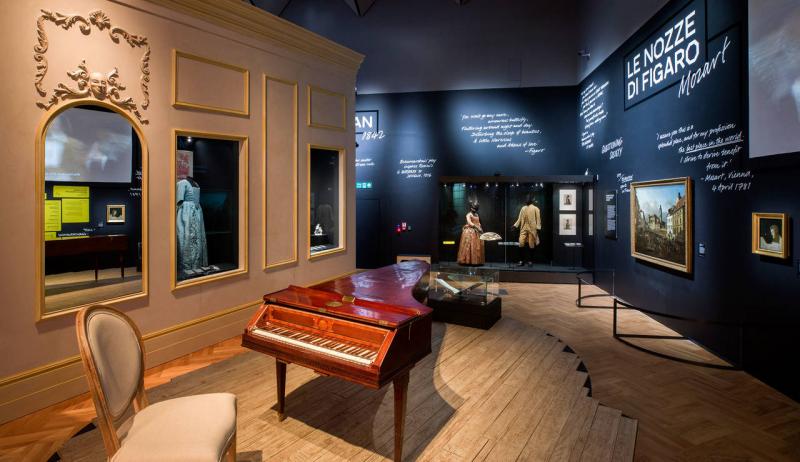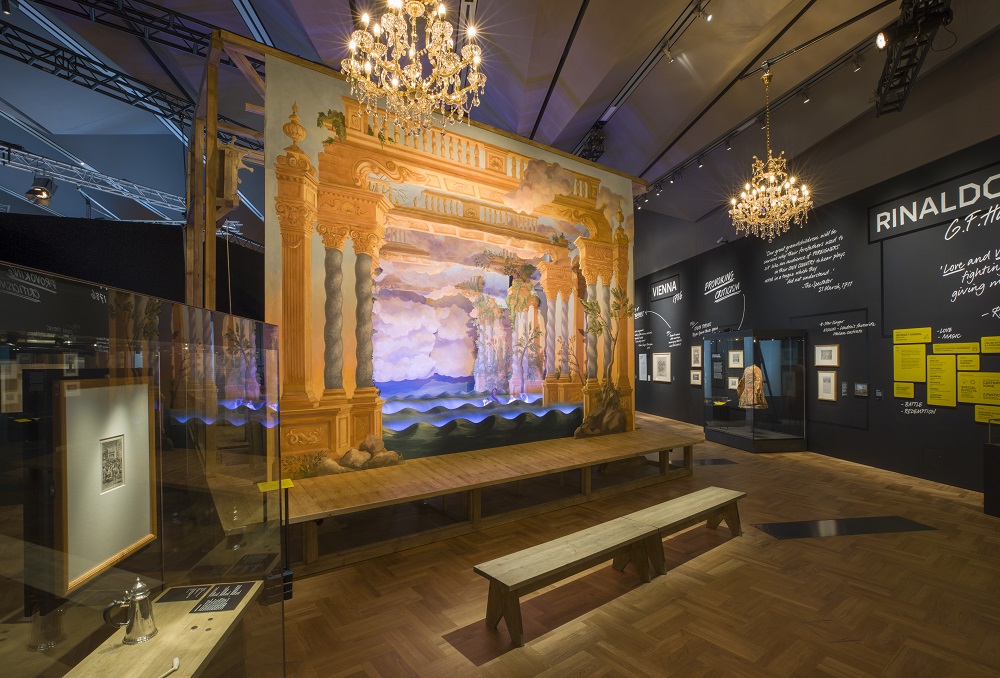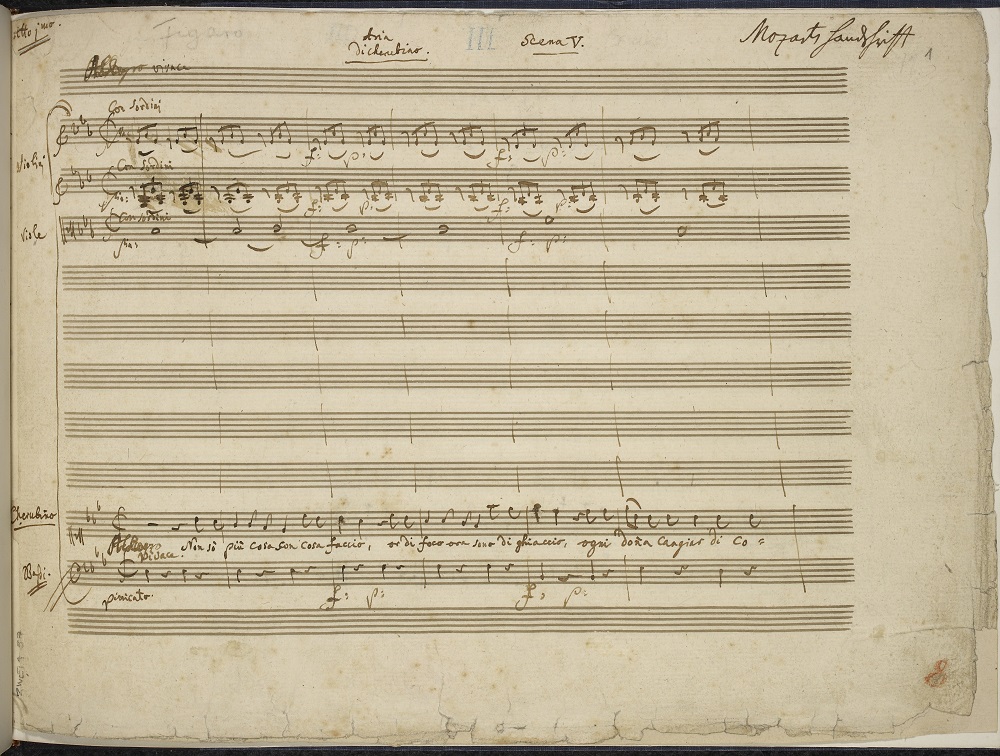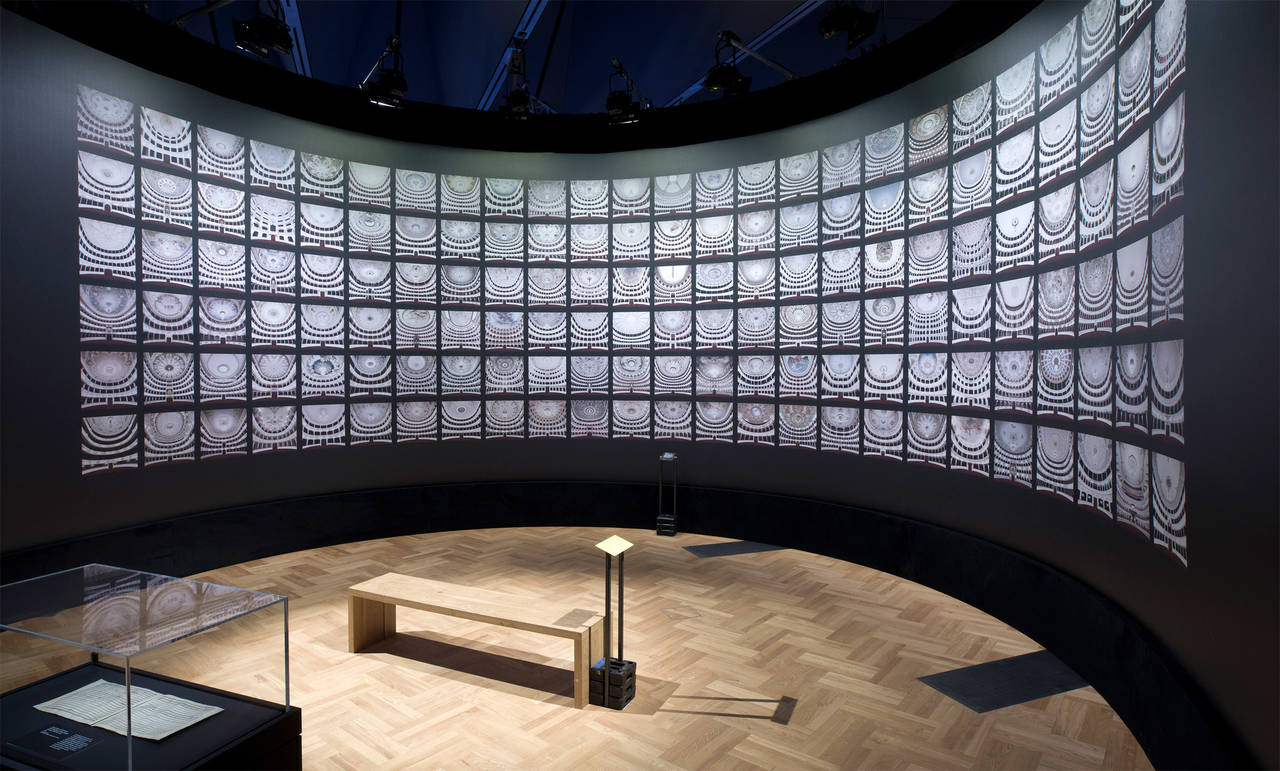Opera: Passion, Power and Politics, V&A review - seven cities, seven masterpieces | reviews, news & interviews
Opera: Passion, Power and Politics, V&A review - seven cities, seven masterpieces
Opera: Passion, Power and Politics, V&A review - seven cities, seven masterpieces
Stunning range in spacious operatic rooms

There's something here for everyone, as a "roll up!" slogan for one of the greatest shows in town might put it.
Discrimination proves key. "Operas and cities" is the brief, which could have sprawled or resulted in some inapposite choices, but what we have is impeccable. In the first two "theatres", it looks as if there might be more from the V&A's enormous collections to show the beauty of craftsmanship in each of the chosen ages than direct source material about the operas in question: those glass vessels and instruments from Venice around the time Monteverdi's The Coronation of Poppea was premiered in 1642, the Hogarth image of a coffee house and a fan of 1787 with a plan of the Haymarket Theatre Royal's auditorium for Handel's Rinaldo in London. But already we're impressed with original manuscripts, and the first big theatrical payoff is a period-style working model with painted flats, scenery raised and lowered, rolling waves and mermaids frolicking between them. Gorgeous.
 There are very precious loans here from Vienna, Salzburg – the last, unfinished portrait of Mozart by Langer – and Prague (wonder of wonders, the 1787 piano on which the master played while he was in the city for the success of the Don Giovanni premiere). Milan's libraries and Scala Theatre Museum have loaned wonders for the 1842 Nabucco room, too, though the set-piece here is a contemporary work, Matthias Schaller's Fratelli d'Italia, photographs assembled between 2005 and this year of 150 19th century Italian opera house auditoriums comprising one big, theatrical whole (pictured below).
There are very precious loans here from Vienna, Salzburg – the last, unfinished portrait of Mozart by Langer – and Prague (wonder of wonders, the 1787 piano on which the master played while he was in the city for the success of the Don Giovanni premiere). Milan's libraries and Scala Theatre Museum have loaned wonders for the 1842 Nabucco room, too, though the set-piece here is a contemporary work, Matthias Schaller's Fratelli d'Italia, photographs assembled between 2005 and this year of 150 19th century Italian opera house auditoriums comprising one big, theatrical whole (pictured below).
Some might find fault with Wagner being linked to Paris (the 1860 version of Tannhäuser) rather than Bayreuth, but the fourth space usefully kills two operatic birds with one stone, featuring among other artistic treasures Degas's depiction of the pit and stage in the notorious zombie-nuns ballet from Meyerbeer's Robert le Diable; I've seen it, tucked away upstairs in the V&A's rather odd picture collection, but I wonder if many folk have got that far (the Theatre Museum is nearby, a gem within a giant). It's clever of the curators to have assembled different films of how the Venusberg ballet has been handled in recent decades – I rather liked the look of former Royal Opera chief and advisor on the exhibition Kasper Holten's version – though even more spectacular, if less creative, is the giant screen next door depicting the bloodiest depiction of Salome's final scene with John the Baptist's head in Strauss's epoch-making 1905 opera, David McVicar's for Covent Garden (he and the Royal Opera get the other big look-in, the Sextet from Figaro – visually striking performances both).
It's clever of the curators to have assembled different films of how the Venusberg ballet has been handled in recent decades – I rather liked the look of former Royal Opera chief and advisor on the exhibition Kasper Holten's version – though even more spectacular, if less creative, is the giant screen next door depicting the bloodiest depiction of Salome's final scene with John the Baptist's head in Strauss's epoch-making 1905 opera, David McVicar's for Covent Garden (he and the Royal Opera get the other big look-in, the Sextet from Figaro – visually striking performances both).
This Salome/Dresden room excels on the artistic front, with mostly Austro-German – and male – depictions of female sexuality, outstandingly so Kirchner's and Schmidt-Rotluff's woodcuts and lithographs. Here, too, is the manuscript score for Salome's repulsive head-kissing, and a nice touch in a recreation of the oriental rug-covered couch in Freud's study for folk to sit on and watch the film. Sound and vision go crazy for Shostakovich's Lady Macbeth of Mtsensk – Leningrad 1934, with bright red hangovers from the 1917 revolution. I'd not seen the film of the very young-looking composer rattling off the galop of the shabby peasant from the opera: stunning, and nicely offset by a recreation of his study in the foreground. Again, loans from Russian museums enrich the context; an excellent choice of another gem by Kuzma Petrov-Vodkin to follow the revelatory room in the Royal Academy's Revolution exhibition provides a perfect, if unintended, parallel with the bored provincial housewife of the opera and the novella on which it's based.
Sound and vision go crazy for Shostakovich's Lady Macbeth of Mtsensk – Leningrad 1934, with bright red hangovers from the 1917 revolution. I'd not seen the film of the very young-looking composer rattling off the galop of the shabby peasant from the opera: stunning, and nicely offset by a recreation of his study in the foreground. Again, loans from Russian museums enrich the context; an excellent choice of another gem by Kuzma Petrov-Vodkin to follow the revelatory room in the Royal Academy's Revolution exhibition provides a perfect, if unintended, parallel with the bored provincial housewife of the opera and the novella on which it's based.
As grand finale, there's an assemblage of all-too-short clips from 20th and 21st operas since, starting with Gershwin's Porgy and Bess and ending with the wildly overrated if visually striking success of Benjamin's Written on Skin. You might be misled from the short clip into thinking that Glass's Einstein on the Beach is bearable for the entire stretch; for me, it's not. Too much going on here, too many different scenes at once, but as a taster it's a good start. And that should send visitors out anxious to see and hear more: one aim of the exhibition, among many, very well done. What a tragedy that Martin Roth, director of the V&A at the time the project was launched, is no longer with us to see it.

Add comment